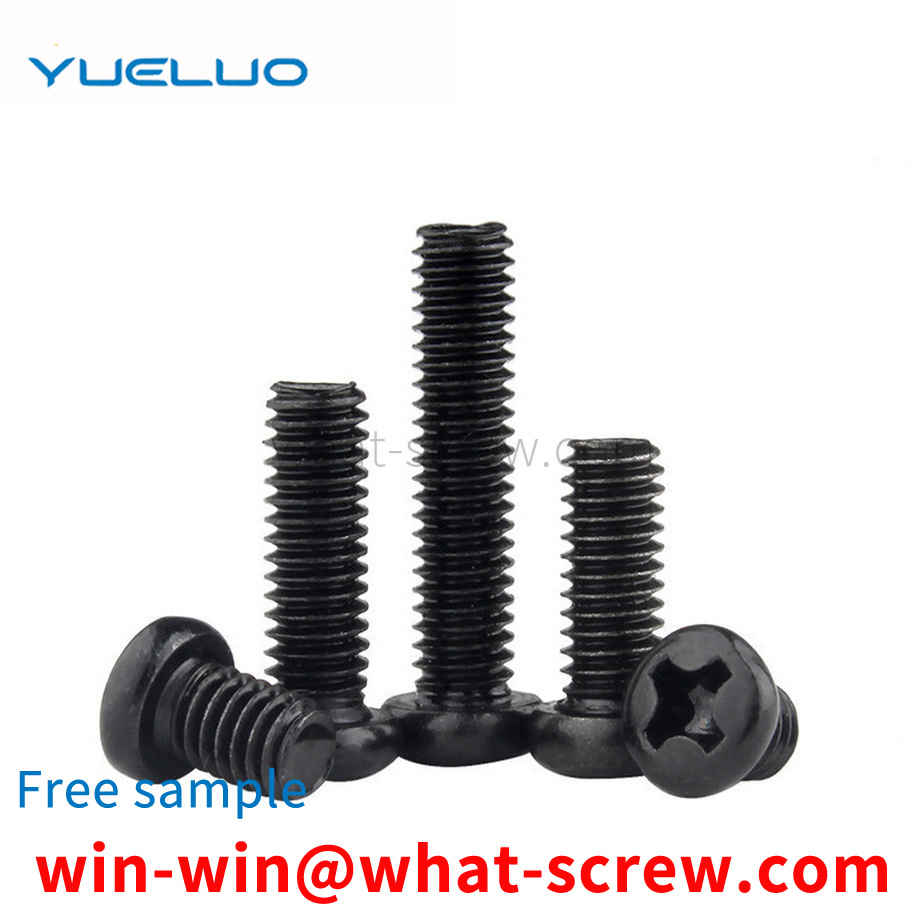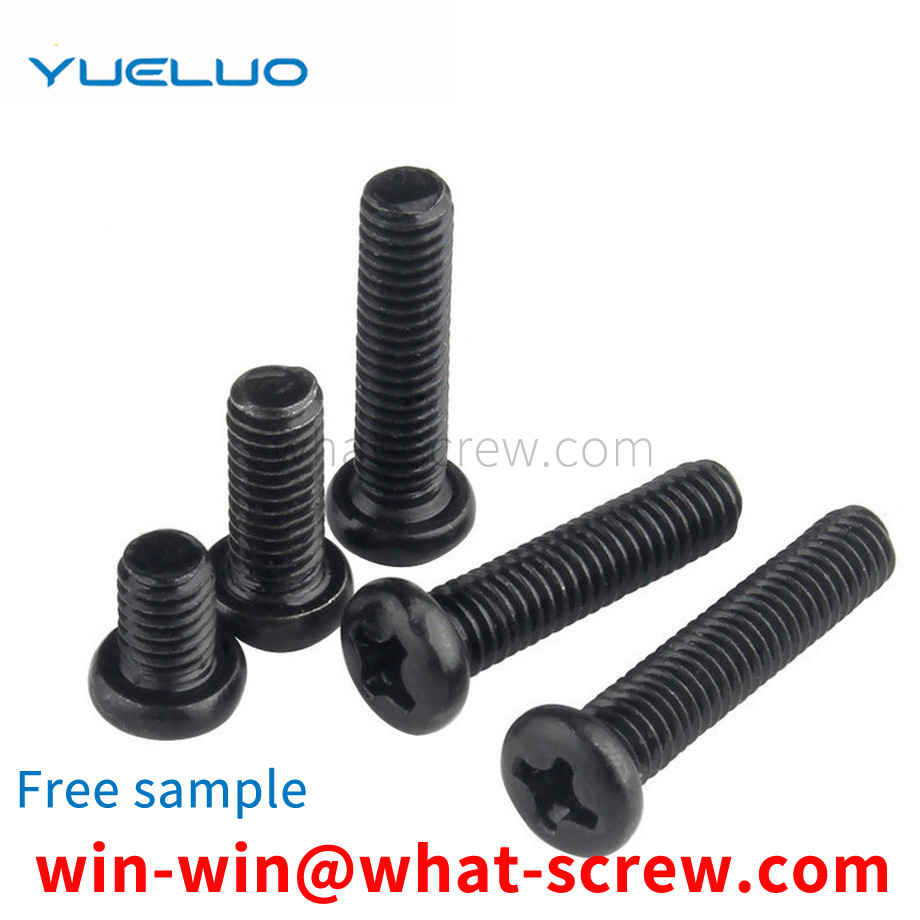The quality of electroplating is measured primarily by its corrosion resistance, followed by appearance. Corrosion resistance is to imitate the working environment of the product, set it as the test condition, and perform a corrosion test on it. The quality of electroplating products shall be controlled from the following aspects: 1. Appearance: Partial uncoated, scorched, rough, gray, peeling, crusted, and obvious stripes are not allowed on the surface of the product, and pinholes, pitting, and black plating are not allowed. Slag, loose passivation film, cracks, peeling off and serious passivation marks. 2. Coating thickness: The operating life of fasteners in corrosive atmosphere is proportional to its coating thickness. The general recommended thickness of economical electroplating coating is 0.00015in ~ 0.0005in (4 ~ 12um). Hot-dip galvanizing: the standard average thickness is 54 um (43 um for diameter ≤ 3/8), and the minimum thickness is 43 um (37 um for diameter ≤ 3/8). 3. Coating distribution: With different deposition methods, the aggregation method of the coating on the surface of the fastener is also different. During electroplating, the coating metal is not uniformly deposited on the peripheral edge, and a thicker coating is obtained at the corners. In the threaded portion of the fastener, the thickest coating is located on the thread crest, gradually thinning along the flank of the thread, and the thinnest deposit is at the bottom of the thread, while hot dip galvanizing is just the opposite, the thicker coating is deposited on the inside corners and On the bottom of the thread, mechanical plating tends to deposit the same metal as hot-dip plating, but is smoother and has a much more uniform thickness over the entire surface [3]. 4. Hydrogen embrittlement: During the processing and processing of fasteners, especially in the pickling and alkali washing before plating and the subsequent electroplating process, the surface absorbs hydrogen atoms, and the deposited metal coating then traps hydrogen. When the fastener is tightened, the hydrogen is transferred towards the most stressed parts, causing the pressure to build up beyond the strength of the base metal and producing microscopic surface cracks. Hydrogen is particularly active and quickly seeps into the newly formed fissures. This pressure-rupture-penetration cycle continues until the fastener breaks. Usually occurs within a few hours after the first stress application. To eliminate the threat of hydrogen embrittlement, fasteners are heated and baked as soon as possible after plating to allow hydrogen to seep out of the plating, typically at 375-4000F (176-190C) for 3-24 hours. Since mechanical galvanizing is non-electrolyte, this virtually eliminates the threat of hydrogen embrittlement, which exists in galvanizing using electrochemical methods. In addition, due to engineering standards, it is forbidden to hot-dip galvanize fasteners with hardness higher than HRC35 (Imperial Gr8, metric 10.9 and above). Therefore, hydrogen embrittlement rarely occurs in hot-dip plated fasteners. 5. Adhesion: Cut or pry off with a solid tip and considerable pressure. If, in front of the blade tip, the coating peels off in flakes or skins, exposing the base metal, the adhesion shall be considered insufficient.
Gaskets are widely used in the machinery industry. According to the different needs of machinery and equipment in different industries, the structural forms of the sealing points are also different. Plum washer is one of the commonly used seals. It is commonly used between the pump and the motor coupling. In the actual production process of the enterprise, it is found that due to the influence of the material and structure, this type of gasket in common use can withstand impact force. Small, the septum is easily damaged. Because the current plum washers are all one-piece structures, even if one or several of the partitions are damaged, they need to be replaced as a whole. Although the value of a single plum washer is low, it needs to be shut down for maintenance and replacement almost every week. It also seriously affects the normal production of the enterprise, and the one-piece plum blossom gasket is also difficult to repair, adding unnecessary use costs to the enterprise. For this reason, the plum blossom gasket needs to be improved to strengthen the impact resistance of the gasket, and can be repeated Maintenance and use, prolong the maintenance cycle of the equipment, and ensure the normal production of the enterprise. The purpose of the utility model Yueluo is to solve the above-mentioned deficiencies in the existing technology, improve the existing technology, and provide a simple structure, which strengthens the impact resistance of the gasket, and can be repeatedly maintained and used to prolong the maintenance of the equipment. The cycle guarantees the plum blossom elastic washer normally produced by the enterprise. In order to achieve the above purpose, Yueluo is achieved through the following technical solutions-namely a plum blossom elastic washer, including an elastic washer body with a partition, the technical point is that the washer body is composed of a washer base and a partition that is independent of each other. , the septum and the gasket base are fixedly connected into one through the fixing piece. In order to further strengthen the impact resistance of Yueluo, the contact parts of the spacer and the washer base are respectively processed with a limited clamping table and a matching groove, so that the spacer and the washer base can be better integrated into one. According to the different specifications of the torx washer, the spacer and the washer can be fixed as a whole by rivets; or by screws. In addition, a semi-rigid tightening ring with grooves is embedded inside the washer base, and the width of the tightening ring is smaller than the width of the washer base; the ends of the rivets or screws are located in the grooves of the tightening ring, so as not to affect the performance of the torx washer JH is often installed. After the above improvement, Yueluo has improved the one-piece structure of the plum-blossom washer into a split structure and adopted a variety of fixed structure forms, so it has a simple structure, strengthens the impact resistance of the gasket, and can be repeatedly maintained and used. , Extend the maintenance cycle of the equipment and ensure the advantages of the normal production of the enterprise.
Stainless Steel Nuts Hexagon Nuts (GB6170/DIN934), Thin Nuts (GB6172/DIN439), Heavy Nuts (Metric, US), Nylon Lock Nuts (DIN985-DIN982 Thick), All Metal Lock Nuts (DIN980M), Cap Nuts (DIN1587), Flange Nuts (GB6177/DIN6923), Flange Nuts Nylon Lock Nuts (DIN6926), Square Weld Nuts (DIN928), Hex Weld Nuts (DIN929), Butterfly Caps (GB62, DIN315, American), K cap, etc. Specifications: M1.6-M64
The production process of rivet nuts is basically similar to that of other screws. It's just that the screws are punched out with a screw pier, and the nuts are punched out with a nut pier. Introduce the production process of rivet nuts. 1. First, it is necessary to determine what material and material the rivet nut is, so that we can use what material to produce and what material to use. Knowing what materials and materials are used, we can buy screw wires. 2. Determine the size and length of the rivet nut. This is the best way to use a large screw wire. 3. After determining the material, material, size and type, we need to see if it is a commonly used rivet nut. If so, there must be a corresponding mold in the factory. If not, it is non-standard, then we have to order molds. 4. After everything is ready for production, it is necessary to use the nut machine to punch out the shape of the rivet nut, that is, the appearance. 5. After the pier is punched out, use the machine for tapping the nut teeth to tap it. 6. After the thread is tapped, electroplating is performed. The stainless steel rivet nut does not need electroplating, it only needs to be cleaned. If you want to electroplate other colors, you have to take it to a professional electroplating manufacturer for electroplating treatment.
At present, the washing machines used in the domestic market, especially the large-capacity washing machines, have high rotational inertia due to their large washing capacity. The wear between the input shaft and the clutch sleeve will cause the increase of the axial clearance. There will be strong shaking and loud noise, which will increase the wear and tear and affect the service life. In the prior art, the wave washer is used to prevent loosening and buffer shock, so that the gap between the input shaft and the clutch sleeve will not increase due to the wear of the two, which plays the role of automatic gap compensation, so as to ensure the clutch Smooth rotation, low noise and light wear ensure the reliable service life of the clutch.
We have many years of experience in the production and sales of screws, nuts, flat washers, etc. The main products are: circular seals, stainless steel adjusting bolts, standard fastener screws, A3 round nuts and other products, we can provide you with suitable tightening Firmware Solutions.



















 Service Hotline
Service Hotline




